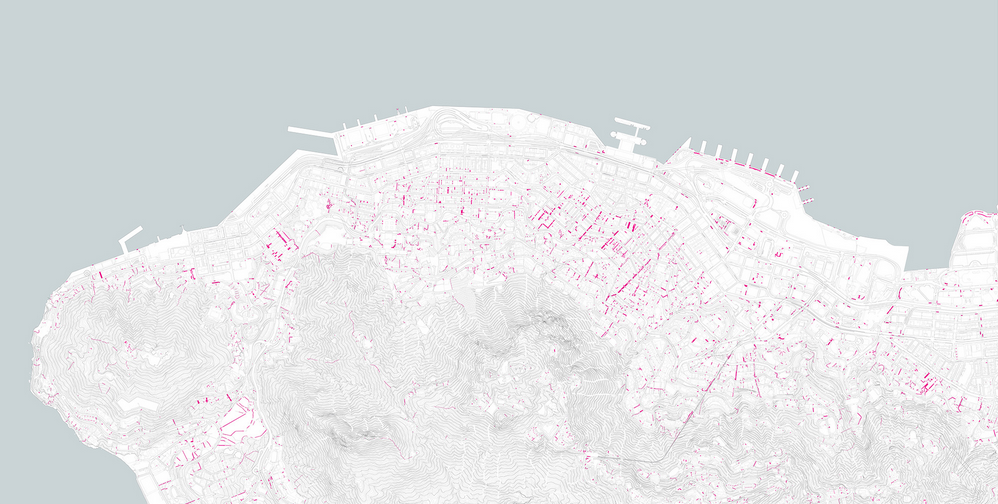As part of the everyday landscape of mountainous Hong Kong, outdoor stairways play a critical role in creating a permeable and accessible public realm. Embedded in hillsides, stacked on sidewalks or replacing streets and alleys altogether, Hong Kong’s ubiquitous and often emergent stairs (and the complex wayfinding they enable), are a reflection of a diverse city in continual flux.
Obliquely understood as utilitarian uphill access routes, the majority of Hong Kong stairs are built and maintained with function and frugality in mind. Although some number among the city’s oldest remaining built insertions, consolidated documentation of stairways is limited to the few declared a Monument or given a Built Heritage Grade. However, beyond those with or deserving of heritage status, there are thousands of stairways whose transitioning role is an indicator of wider cultural landscape change. Serving as markets, ephemeral gathering places, secret short-cuts, wedding photo hot-spots, or quiet rest areas away from vehicular traffic, stairways are a vital typology of pedestrian and community infrastructure which define and embody the shared cultural experience of Hong Kong’s extreme topography.
Stairs are all too often seen as barriers to be replaced by an elevator or an escalator, rather than being understood as pieces of cultural and physical heritage which have shaped the very essence of the city. By investigating the role of stairs in defining the character of the Blake Garden neighborhood within the context of Hong Kong, a Stair Culture is discovered whose existence can condition types of intervention which will respect and improve the existing fabric of the city, rather than perpetuate the current practices of devaluation, destruction, and replacement of that which is deemed no longer useful or profitable enough. These destruct-to-construct practices have led to the generally poor condition of the public realm and the increasingly placeless, generic Hong Kong we find today.
In seeking to redefine pedestrian infrastructure in Hong Kong as an agent in the creation of places of social and cultural value, we suggest a strategy of situational redefinition where generic solutions are adapted to meet specific needs after a close examination of circumstances. Stairs are understood not just as circulation corridors but also as integral to the identity of the communities in which they reside – they both reflect and embody their environment. Cultural connections to stairs are not immediately apparent, but have meaning to the people who use them and places where they exist. These connections, and the sense of discovery and relative privacy they elicit, are valuable parts of a future city where difference can be prioritized over equality, community benefit over financial gain, slowness over speed, and meandering-through over travelling above.

